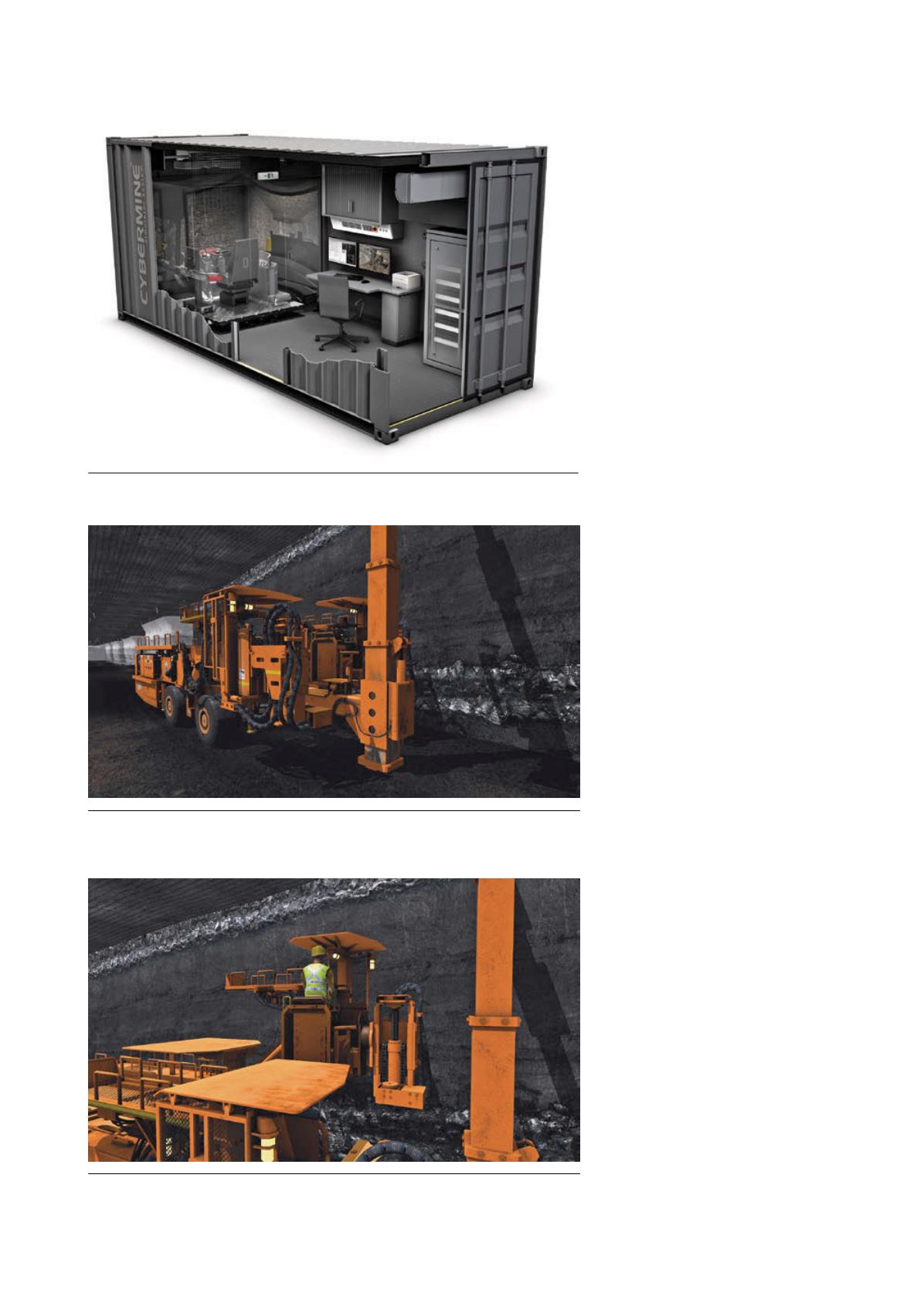
the controls in the real environment.
Using the controls almost becomes
second nature to the operator. The
operator can familiarise himself with
the machine on the simulator over a
couple of days.” Khutala has over 10 of
these Fletcher soft rock bolters in
underground operations and aims to
do most of the training on the
simulator with just the licensing done
on one of the actual machines.
Training on a mining simulator
allows trainee operators to learn all the
vehicle’s functions and operating
procedures in a safe and controlled
environment. Mine personnel and
equipment are not put at risk by rookie
operators, while at the touch of a
button trainees can be exposed to
various emergency procedures, such as
tyre bursts or engine fires, none of
which can be safely taught on the real
vehicle. This prepares trainee
operators to be able to identify hazards
in the real world, preventing accidents,
reducing downtime and increasing
productivity.
“The HDDR is one of our highest
reaching twin boom bolters,”
explained Jaco Steyn, Regional
Manager at Fletcher Mining
Equipment. “It can reach up to 6 m
and it’s also fitted with our latest
design rib access booms.” Most hard
rock bolter applications are single
boom and diesel electric-powered,
while in coal mining the most common
are twin boom and electric to keep up
with the higher required bolt rate.
The CYBERMINE bolter simulation
takes into account factors such as feed,
rotation and percussion pressures, bit
rotation speed and wear to provide a
realistic drilling experience. At the end
of each exercise, the instructor is
provided with a set of reports covering
various aspects of operation. For
example, productivity reports detail
quantifiable returns such as hole
position error, drill angle error (pitch
and yaw), hole depth, number of holes
drilled and number of missed or
skewed holes, as well as averages and
totals for these quantities. The operator
evaluation is checked against a set of
predefined checks for the particular
cab simulated and each is categorised
into affecting either health and safety,
Figure 2. ThoroughTec was tasked with accurately simulating the bolter and the
Khutala mine it operates in.
Figure 3. The operator raises the left platform as he prepares to drill and bolt.
Figure 1. ThoroughTec’s CYBERMINE simulator system is now in its fourth generation.
38
|
World Coal
|
June 2015


